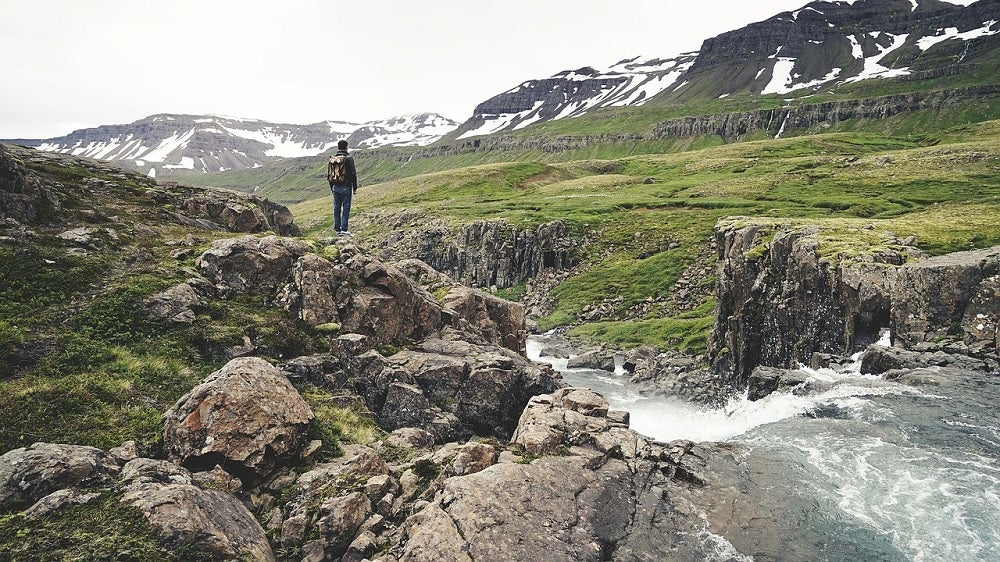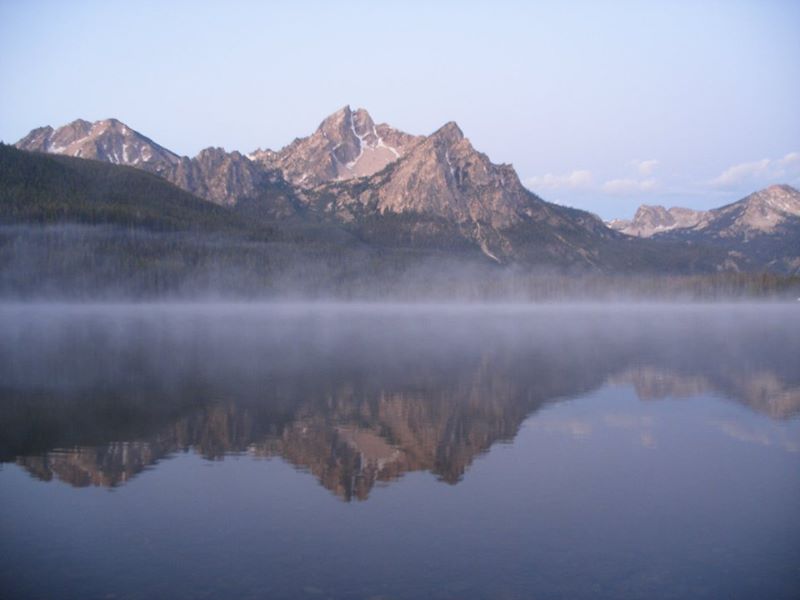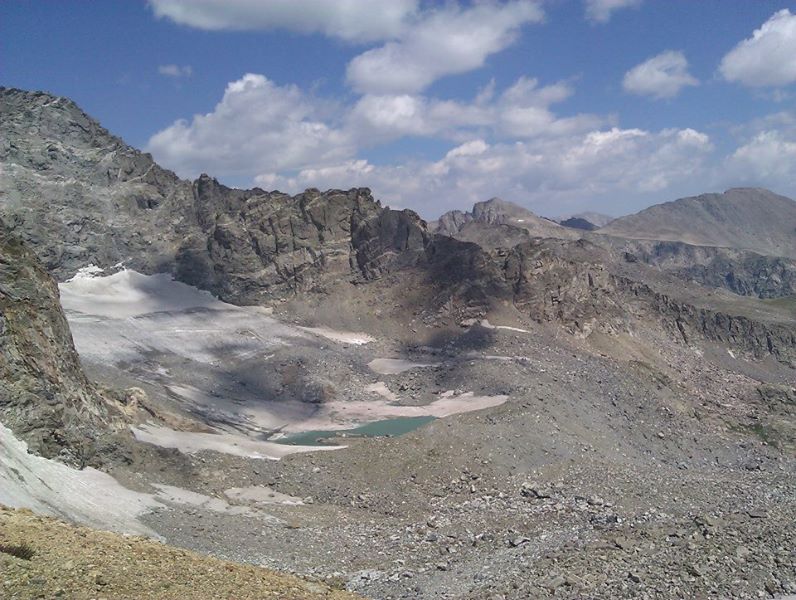
Our Editors independently research, test, and rate what we feel are the best products. We use affiliate links and may receive a small commission on purchases.
Hiking is one of the most rewarding physical activities that you can pursue. Not only is it a great and fun way to stay in shape, but it can also expose you to experiences and vistas in nature that you could never see without putting in the legwork.
If you’re interested in stepping off the beaten path, you’ve probably looked into backcountry hiking. Hiking in the backcountry dials everything up a level, including the excitement and the difficulty.
Here’s how you can have a fun time breaking into backcountry exploration safely.
Learn About Your Area
What qualifies as backcountry hiking, and how can you tell if you have some trails near you? These are questions with vague answers but answers all the same.
Just between you and me, let’s consider the backcountry to include any place where you feel completely cut off from civilization.
Whether that means that you’re 30 miles from another living soul or just 30 minutes from the nearest town, take it how you will.
The issue at hand is graduating from common city trails — trails that hug nearby rivers or cut through hills at the outskirts of town. If you’re looking to get of the crowded trails and break into the backcountry, try these ideas.
- Consult with locals – If you see folks who look like they mean business on some of the more well-traveled hiking trails in your area, ask them about backcountry hiking in the area. Exercise common sense and leave people in peace if they just want to hike, but most outdoors enthusiasts can gush on and on about their favorite hikes.
- Search the web – A bustling online scene has emerged surrounding outdoor activity. Sites like SummitPost and AllTrails offer detailed maps of any given area, including directions for hikes in the backcountry and trail reviews and reports from other local hikers.
- Buy a local guidebook – Online information typically only reflects what zealous hikers are interested in or able to put up in their free time. However, when a profit motive gets involved — as is the case with a guidebook — an author can go to impressive lengths to overturn every rock and discover every trail. Just be aware that guidebooks might not have the most up-to-date information when it comes to trailheads, area closures, and geological phenomena like rock falls.
Preparing for Backcountry Hiking
Hiking through the backcountry is a far cry from a casual morning stroll. When it comes to hiking far outside the boundaries of civilization, being prepared is essential to both entertainment value and safety. Here’s your checklist before diving into the backcountry:
Get Prepared Physically
Hiking in the backcountry can be grueling. Trails aren’t always completely smooth, and you may have to surmount obstacles like large boulders, fallen trees, and fast-moving streams.
When it comes to the backcountry, being in shape can mean the difference between making it to your destination and back or barely making it out of the parking lot.
Depending on where you’re hiking, you may also need a level of physical fitness above and beyond what’s required for the hike in order to account for the high altitude.
Hitting the gym and working on your cardio is a great way to get into shape for just about any activity, hiking included. However, you may find that your best training comes from turning easy-for-you hikes into workouts.
This will allow you to work on your fitness in the environment where you intend to use it.
Get Prepared Mentally
If your usual stomping ground is only about 30 minutes from downtown, then you may not be prepared for the total isolation that backcountry hiking can bring.
The silence and distance can be calming, but it’s easy to get stressed out if your plans start to break down.
Practice breathing exercises and stock your head full of safety knowledge so that you’ll be able to keep your cool in case of an emergency.
Prepare Your Gear
A committing backcountry hike will require that you bring everything you need with you. There’s no quick jog back to the car or easy Starbucks run when you’re miles from the nearest road.
Here are some gear suggestions before your first big backcountry hike:
- A good lightweight backpack – Weight is everything when it comes to physically demanding hikes. The first thing that you can do to to cut down on your weight is to get a backpack meant for hiking. This’ll let you carry all your gear without weighing you down too much.
- Relevant maps and area information – It’s not a bad idea to bring the guidebook that we mentioned earlier, but hiking info is taking a new turn in the information age. You can download high resolution trail maps to your phone, giving you a more detailed and lightweight look at your region than any guidebook. Just remember to get the right phone for the outdoors. Like many high-end models, the iPhone X is water resistant, so a quick dip in a stream or an unexpected rainstorm won’t leave you lost. Don’t forget your solar charger and a GPS hiking watch or handheld GPS unit.
- Hiking Footwear – Maybe the most important hiking gear you can have. A lightweight, comfortable pair of hiking shoes, (Women’s hiking shoes) or a pair of hiking boots, (Women’s hiking boots). Don’t skimp here, if your feet are uncomfortable, you are not going to enjoy your hike!
Safety First
Hiking can be incredible fun, but always remember to put safety first.
Before you go on a hike:
- Familiarize yourself with dangers in the area, such as mountain lions, loose rocks, or potential flash floods.
- Tell someone where you’re going and when you expect to be back. If something happens to you and you’re out of cell range, this person could be your only way to get help.
- Find a partner to hike with you, if possible. Hiking is almost always safer in a group.
During the hike, make sure to:
- Stay on designated trails. Not only is this respectful to the land and wildlife that you’re hiking through, but it’s also the first place that rescuers will look if you don’t return on time.
- Trust your judgement over guidebook instructions. Your guide may instruct you to cross a “small stream,” but if, when you arrive, you’re facing more of a raging river, make your own judgement call for the situation.’
At the end of the day, hiking in the backcountry can be an incredibly rewarding experience. Do your homework and prepare yourself before your first big backcountry trip. Remember to practice safety first and you’re sure to have a great time in the wilderness.


